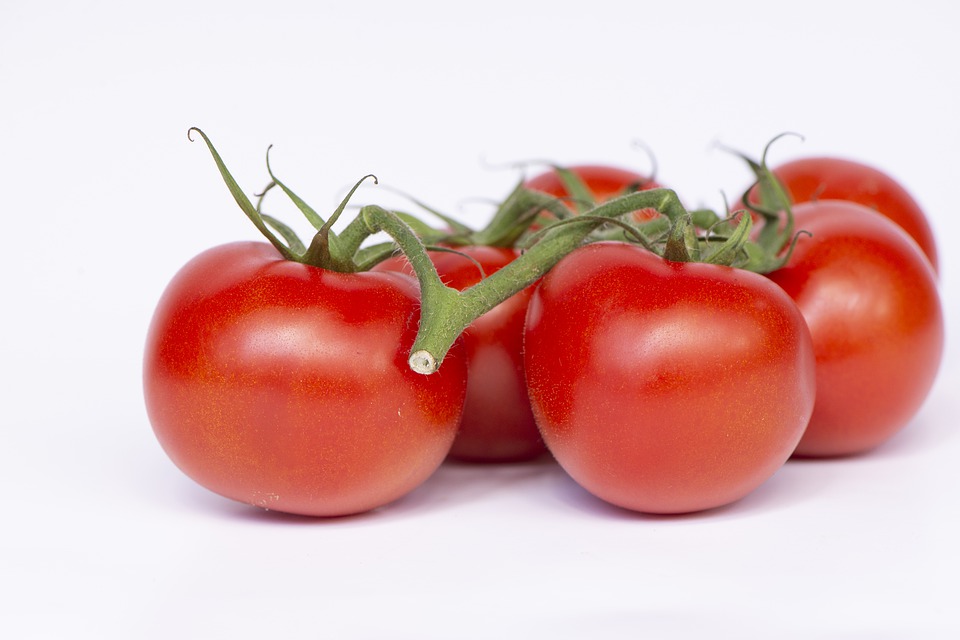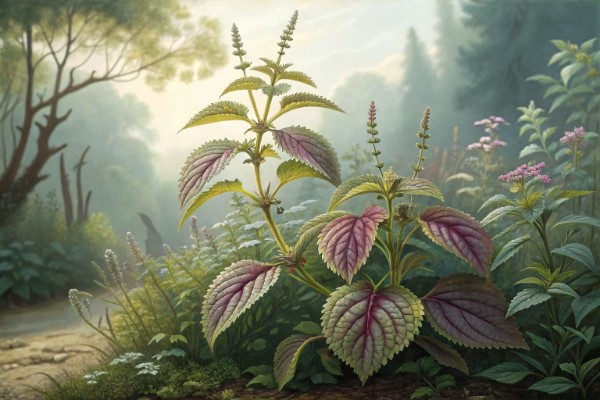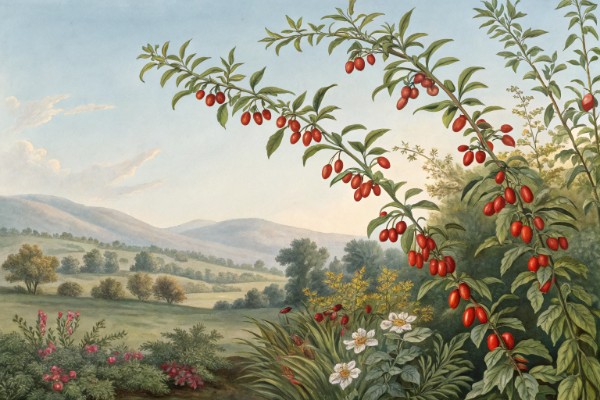Growing Tomatoes: A Simple Guide to Planting Success

Growing Tomatoes
Growing tomatoes demands sun, fertile soil, and proper timing. Give seedlings 6–8 hours of daily sunshine, plant deeply for sturdy roots, and space them well for airflow. Get this right, and you'll savor garden-fresh tomatoes all season—juicy proof of your gardening skills. Here's how to make it happen.
I stopped rushing tomatoes after losing a whole row to a late frost that bit like a bad joke. Now I wait for nights above 55 F 13 C and soil at 60 F 16 C, and I always use a soil thermometer.
Tomatoes top home garden plantings in the United States, with surveys showing more than 80 percent of gardeners grow them (National Gardening Association).
Site and Sun
Give tomatoes full sun for 8 to 10 hours and wind protection without dead air. Space plants 24 to 36 inches 60 to 90 cm apart in rows 3 to 4 feet 0.9 to 1.2 m to keep foliage dry and disease pressure down.
Soil That Pulls Its Weight
Target pH 6.2 to 6.8 and add 2 to 3 inches 5 to 8 cm of finished compost before planting. I feed lightly at transplant with a balanced fertilizer, then side-dress at first fruit set so I get fruit, not a jungle of leaves.
"Avoid excessive nitrogen if you want tomatoes to fruit rather than produce foliage" (Cornell University Cooperative Extension).
Timing, Heat, and Fruit Set
Transplant after the last frost date when soils warm and nights settle, or use row cover to cheat spring by a week. I have seen perfect flowers abort during heat spikes.
Fruit set drops when days top 90 F 32 C or nights stay above 70 F 21 C (University of California Agriculture and Natural Resources).
Starting Seed Like You Mean It
Start seed indoors 6 to 8 weeks before your last frost at 70 to 80 F 21 to 27 C with bright light for 14 to 16 hours. A heat mat, a simple fan for sturdier stems, and bottom-watering prevent the lanky seedling blues.
Transplant Technique That Works
Harden off for 7 to 10 days, then plant deep, burying the stem to the first true leaves so buried nodes form roots. I water in with a mild starter solution and mulch immediately to keep moisture steady.
Plant Types, Pruning, and Support
Determinate plants top out and set fruit in a flush, great for canning runs and compact spaces. Indeterminate plants climb until frost and pay for a sturdy system and light pruning of suckers below the first flower cluster.
- Florida weave: fast, cheap twine on stakes for rows; best for medium plants.
- Heavy-gauge cages 54 inches 137 cm or taller: tidy and reliable for most yards.
- Single-leader trellis with clips: high yield, clean foliage, and easy harvest if you like weekly pruning.
Water, Mulch, and Feeding Rhythm
Give 1 to 1.5 inches 25 to 38 mm of water per week in deep, infrequent sessions; drip lines or soaker hoses shine here. Mulch 2 to 3 inches 5 to 8 cm with straw, shredded leaves, or coarse compost to cut evaporation and soil splash.
I side-dress with a balanced or low-nitrogen fertilizer when first fruit set, then every 3 to 4 weeks based on growth. Consistent moisture helps prevent blossom-end rot, which is about erratic water and uptake, not a quick calcium spray fix.
Heat, Cold, and Regional Tweaks
Hot-summer growers can hang 30 percent shade cloth during afternoon scorch and pick heat-set varieties like Phoenix or Solar Fire. Cool-summer growers can warm beds with black plastic, low tunnels, or water-filled plant protectors to push early growth.
Variety Shortlist That Earns Space
- Slicers: Celebrity VFNTm, Big Beef VFNT, Better Boy, Defiant Ph2 Ph3 for late blight zones.
- Cherries and grapes: Sungold for candy-sweet pop, Jasper and Mountain Magic for disease resistance, Juliet for dependable clusters.
- Paste and sauce: Plum Regal for late blight resistance, Mariana for canning, classic San Marzano type for flavor if disease pressure is low.
- Containers and patios: Bush Early Girl, Patio Choice Yellow, Tidy Treats; use 10 to 20 gallon 38 to 75 L containers and a real cage.
Scan seed packets for resistance codes like V, F, N, TSWV, and LB to match your disease history. That alphabet soup saves headaches later.
Common Problems I See, With Quick Fixes
- Early blight and Septoria: prune lower leaves, mulch, widen spacing, and spray preventatively with a registered biofungicide or copper if pressure is high (University of Minnesota Extension and UC IPM).
- Late blight: grow resistant types like Mountain Magic and Defiant, remove volunteer potatoes, and act fast if you see greasy lesions with white sporulation in wet weather.
- Blossom-end rot: steady soil moisture, avoid heavy early nitrogen, and use gypsum if soil tests show low calcium or high sodium; foliar calcium rarely solves it (NC State Extension).
- Cracking and catfacing: water evenly, pick just as fruit colors up, and avoid big temperature swings with mulch and shade in heat waves.
- Tomato hornworm: scout at dusk for frass and chew marks, hand-pick, or use Bacillus thuringiensis kurstaki on small larvae.
- Whiteflies and aphids: strong water spray, reflective mulch, and beneficials; insecticidal soap works when coverage is thorough.
Harvest and Storage That Preserve Flavor
For peak flavor I pick at full color and slight give, or at breaker stage for heavy rain events to dodge cracks. Store at 55 to 70 F 13 to 21 C on the counter with airflow, never in a cold fridge.
Chilling injury develops under 50 F 10 C and taste suffers markedly (UC Davis Postharvest Technology Center).
Crop Rotation and Companions
Rotate tomatoes and their cousins pepper, eggplant, potato on a 3 to 4 year schedule to dodge soilborne diseases like verticillium and fusarium. I tuck basil nearby for easy harvests, and I plant French marigold Tagetes patula as a long-game play against some nematodes, though results vary by species and density.
Smart Buys That Actually Help
- Soil test kit or lab test to dial pH and nutrients before you guess.
- Sturdy cages or T-posts with UV-stable twine for a support that will not fold midseason.
- Drip kit with 0.5 gph emitters and a simple timer to lock in consistent moisture.
- Infrared thermometer and soil thermometer to time planting and manage heat stress.
- Floating row cover for early protection and quick spring warm-up.
- Mulch by the bale or bag so you can cover the soil the day you plant.
- Clean bypass pruners, tomato clips, and soft plant ties for fast, gentle training.
- BT for caterpillars and a biofungicide labeled for tomato foliar diseases as preventive tools.
Numbers That Keep Me Honest
Americans eat about 20 pounds 9 kg of fresh tomatoes per person each year, plus far more as sauce and paste (USDA Economic Research Service).
That demand makes sense the moment a warm Sungold collapses on your tongue. Field to mouth in 10 seconds rewires your standards.
My Field Notes, Season After Season
I strip leaves to the first fruit cluster once plants hit their stride, which dries surfaces faster after rain. I also keep a log of varieties, dates, and weather, because memory lies and ink does not.
On my hottest beds I add a midday splash on heat-wave days to keep flowers fertile, then return to deep watering when the ridge of high pressure fades. In cool summers I lean on early types like Stupice and Glacier to bank wins before August decides what it wants.
Quick Calibration Checklist
- Soil pH 6.2 to 6.8, organic matter near 5 percent, and a plan to feed at fruit set.
- Full sun, sturdy support in place at planting, and mulch on day one.
- Consistent water by drip, pruned lower leaves, and weekly scouting.
- Resistant varieties matched to your disease history and climate quirks.
- Rotation map for next year so today’s success does not plant tomorrow’s problem.
Trusted References I Lean On
- Cornell University Cooperative Extension Vegetable MD Online for disease identification and management.
- UC Agriculture and Natural Resources and UC IPM for climate, fruit set, and integrated pest management guidance.
- UC Davis Postharvest Technology Center for storage temperatures and quality.
- Royal Horticultural Society for cultivar notes and practical culture tips.
- USDA Economic Research Service and National Gardening Association for production and consumption statistics.
Cheatsheet: Tomato Planting for Maximum Harvest
🌱 Variety Selection
Heirloom for flavor. Hybrid for disease resistance. Cherry for quick yields. Paste for sauces.
🌞 Sun & Soil
- Sun: 6-8 hrs/day
- Soil: Loose, rich, pH 6.2-6.8
- Add compost or rotted manure
🗓 Timing
- Start seeds indoors 6-8 weeks before last frost
- Transplant when soil warms: ≥60°F (16°C)
🌿 Planting Steps
- Harden off seedlings for one week outdoors
- Plant deep—cover 2/3 of stem for strong roots
- Space 18-24 in (45-60 cm) apart
- Water thoroughly at planting
💧 Water & Feed
- 1-2 in (2.5-5 cm) water per week
- Mulch to retain moisture and deter weeds
- Feed with balanced organic fertilizer after first fruit set
🛠 Tools and Products You'll Need
- Trowel
- Watering can or drip hose
- Tomato cages or stakes
- Compost or organic fertilizer
- Mulch (straw, bark, or compost)
- Seedlings or seeds
- Pruning snips (optional)
🍅 Harvest & Health
- Pick when fruit is fully colored, slightly soft
- 1 medium tomato: 22 kcal, vitamin C, lycopene
- 1 plant yields up to 20 lbs (9 kg)
- Boosts self-sufficiency; fresh or preserved use
⚠️ Tips
- Rotate crops yearly
- Prune suckers for better airflow
- Watch for blight, hornworms
Frequently Asked Questions About Growing Tomatoes
When is the ideal time to transplant tomato seedlings outdoors?
Transplant tomato seedlings outdoors after the last spring frost, once nighttime temperatures consistently remain above 50°F (10°C). This timing encourages steady growth without the risk of frost damage.
How much sunlight do tomato plants require?
Tomato plants thrive with 6-8 hours of direct sunlight daily. Sunlight powers photosynthesis, fueling vigorous growth and abundant fruit production.
What kind of soil suits tomato plants best?
Tomatoes favor well-draining, nutrient-rich soils with a slightly acidic to neutral pH of approximately 6.0–6.8. Enriching garden beds with compost or aged manure enhances fertility and promotes healthy root formation.
How should tomatoes be spaced when planting in the garden?
Provide 18–24 inches (45–60 cm) of space between tomato plants to encourage adequate airflow and allow plants ample room to mature, helping reduce disease risk and promote productivity.
How deep should you plant tomato seedlings?
Plant tomato seedlings deeply, burying approximately two-thirds of the stem. This practice stimulates additional root growth along the buried stem, resulting in sturdy, vigorous plants.
How frequently should tomato plants be watered?
Water tomato plants consistently, aiming for approximately 1–2 inches (2.5–5 cm) per week, maintaining steady moisture levels without saturating the soil. Avoid irregular watering patterns to reduce cracking or blossom-end rot.
What kind of fertilizer boosts tomato growth?
Feed tomatoes regularly with a balanced fertilizer rich in potassium and phosphorus, such as 5-10-10 or 10-20-20 formulation. Apply fertilizer every 4–6 weeks to nourish fruit development and support plant health.
Should tomato plants be pruned?
Pruning tomato plants by removing side shoots (suckers) encourages better airflow, reduces disease susceptibility, and directs energy toward fruit production. Remove suckers that sprout between the main stem and branches using clean pruning shears or your fingers.
When are tomatoes ready to harvest?
Tomatoes indicate ripeness by their vibrant color, firm yet slightly yielding texture, and characteristic fragrance. Harvest fruits before they soften too much, typically around 60–85 days after transplanting, depending on variety.
Growing tomatoes is as simple and as complicated as paying attention. Give them sun, good soil, and consistent water. Stake them up, pinch the suckers, and keep an eye out for pests. You don’t need a PhD—just patience, a sharp eye, and a willingness to get your hands dirty. The reward? Tomatoes that taste like summer, not like cardboard. If you’re feeling adventurous, try pairing your crop with something spicy—like jalapeño peppers—for a salsa garden that’ll make your neighbors jealous. In the end, growing tomatoes is about showing up, season after season, and letting the plants teach you a thing or two. The payoff is always worth it.



